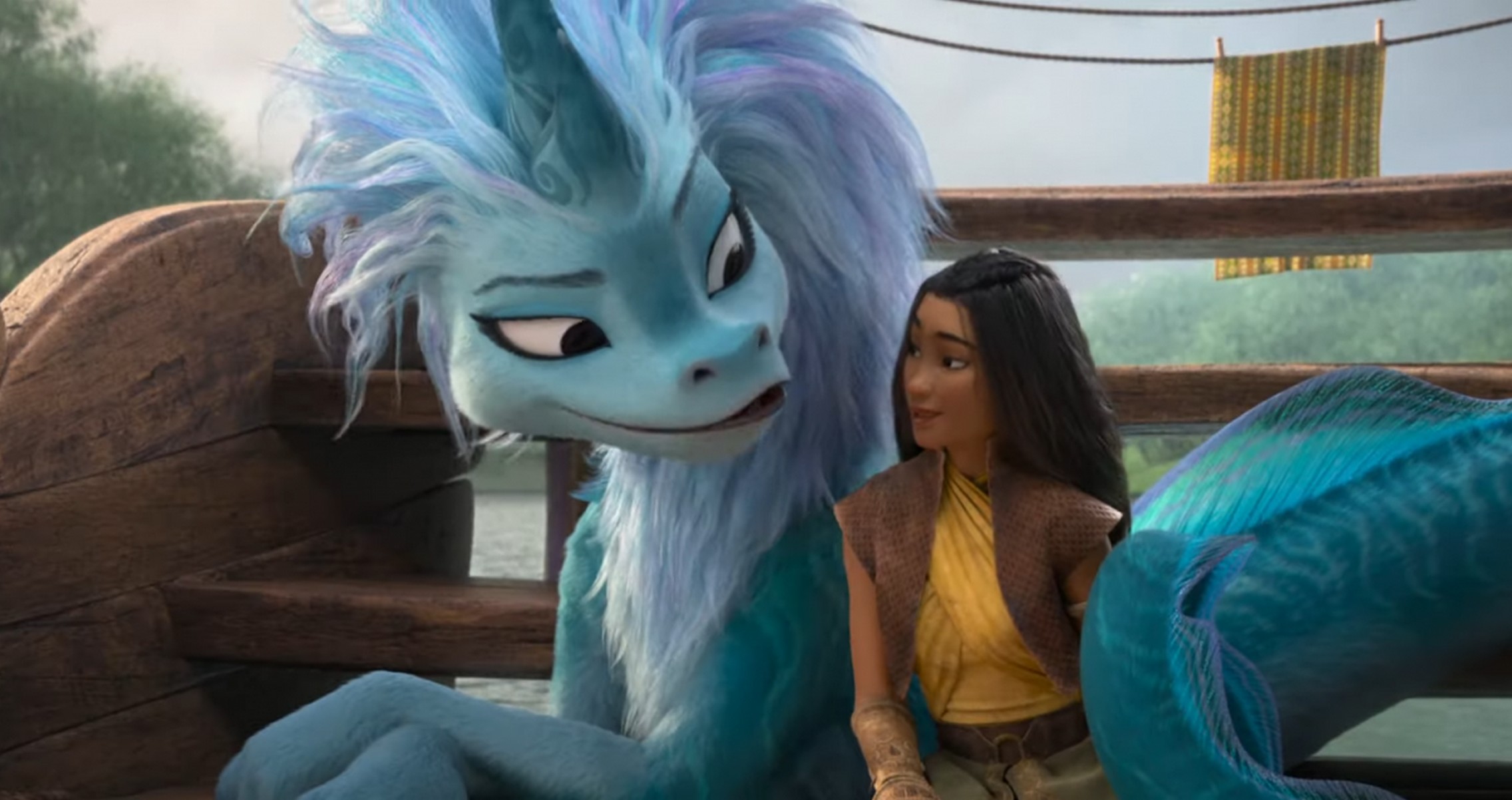

Like the fizzy soft-drink version of a zeitgeist cocktail, Raya and the Last Dragon offers a colourfully upbeat presentation of contents which are definitely mixed.
Now streaming on Disney+, for the most part this is an adventure story of a princess whose friends include a zany shape-shifting dragon. It has lot to commend it, and even the questionable parts can play innocent – which is probably why I feel compelled to detail the active ingredients.
The good parts include some of the most gorgeous animation yet to grace the screen. Boasting impressive steps forward even in animator-bugbear areas like running water and human skin, Raya is almost worth watching for the spectacle alone.
The film also features a positive attitude towards the stuff of religion in general, for example, in a simply conveyed water-sprinkling initiation ritual and a consistent posture of reverence towards other things considered sacred. (Some viewers may feel that the non-Christian ritual is a little too much like baptism and that reverence paid to dragons smacks a little too closely of the Book of Revelation, but to my tastes this all goes down just fine.)
Another commendable element is the film’s emphasis upon the imperatives to trust and forgive those who hurt us. The drama pushes the envelope on this theme, offering a compelling and memorable (if somewhat heavy-handed) depiction of characters not merely tolerating their enemies but proactively loving them towards lovability.
All of this is good, even really good, and constitutes the beef and noodles, if I can switch up the culinary metaphor, of this cinematic recipe. But for me, at least, these are hard to fully appreciate thanks to all the garlic.
Some palates are more sensitive than others, to be sure, and many viewers will probably be able to toss back what this movie serves up without even noticing the kick. The following, though, is some of what stood out to me and almost, if not quite, soured the show.
First, I will just say it, there is the symbolically charged haircut of the women in a rival kingdom and the just-maybe-more-than-friendly glances the princess of that realm exchanges with Raya along the way.
Then, correct me if I’m missing something, but there is also a near total absence of heterosexual romance or spousal love apart from a fleeting allusion between barbarians. Singleness is the norm, this fictional universe seems to suggest, even when you’re a parent.
Finally, there is the species-fluid, spangle-haired dragon voice-acted by outspoken LGBTQ advocate Awkwafina, which at the story’s climax (spoiler alert) joins the others of her kind in a swirling rainbow dance around an image of Raya and her family-is-what-you-make-it ragtag companions.
As I say, some viewers will no doubt argue that these things, each considered singly, amount to nothing. But my sense is that they add up to quite a bit.
Which is not to say that the result is necessarily toxic, so much as there is definitely something in the water. And although it might be present in small enough doses to pass unnoticed by many, parents of children with still impressionable palates may want to think twice about whether now it is time to drink the Kool-Aid.
